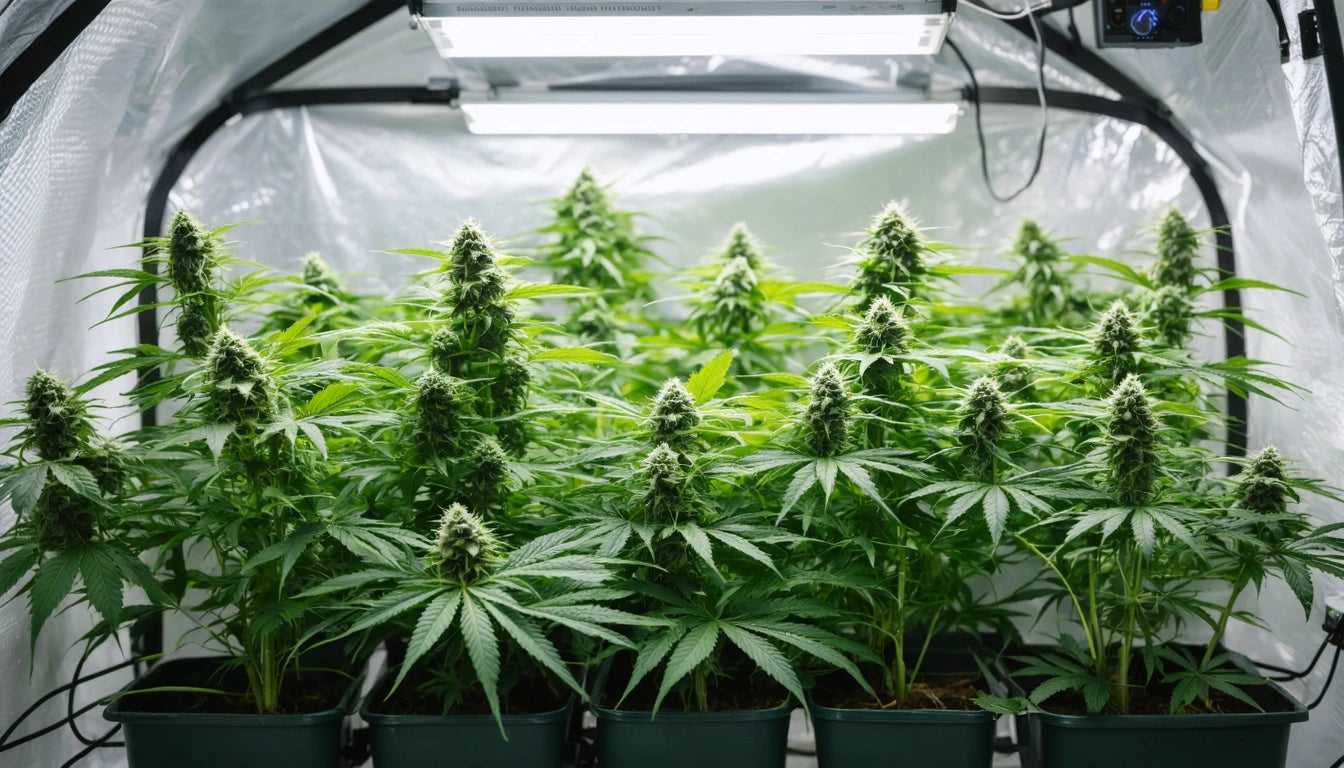Table of Contents
Unlocking the Benefits of Silica for Optimal Plant Growth and Health
Silica is often overlooked in plant nutrition discussions, yet it plays a crucial role in developing stronger, healthier, and more productive plants. Understanding what silica does for plants can significantly improve your growing results, especially for cannabis cultivators seeking maximum yields and quality.
What is Silica and Why Plants Need It
Silica (silicon dioxide) is the second most abundant element in the Earth's crust and a beneficial nutrient for plants. While not classified as an essential nutrient, silica functions as a structural component that strengthens cell walls and improves overall plant resilience. Plants absorb silica in the form of monosilicic acid through their root systems.
In natural environments, plants would typically access silica from soil. However, in controlled growing environments or hydroponic systems, supplemental silica becomes necessary to achieve optimal plant development.
Key Benefits of Silica for Plant Health
Structural Strength and Support
One of the primary functions of silica is strengthening cell walls. This creates sturdier stems and branches that can support heavier yields without bending or breaking. For cannabis growers, this means plants can develop larger, denser buds without structural failure.
Stress Resistance
Silica significantly improves a plant's ability to withstand environmental stressors:
- Temperature fluctuations
- Drought conditions
- Salinity stress
- Nutrient imbalances
Disease and Pest Resistance
Plants with adequate silica levels develop stronger physical barriers against pathogens and pests. The strengthened cell walls make it more difficult for fungi, bacteria, and insects to penetrate plant tissues. This natural defense mechanism can reduce the need for pesticides and fungicides in your growing operation.
Best Silica Sources for Plants and Cannabis
When considering the best silica for cannabis or other plants, several options are available:
Liquid Silica Supplements
Potassium silicate solutions are among the most popular and effective silica supplements. These products typically contain 0.5% to 2% silica and are easily incorporated into feeding regimens. Brands like Armor Si, Power Si, and Silica Blast are highly regarded in the cannabis cultivation community.
Powdered Silica
Diatomaceous earth and rice hull ash are natural sources of silica that can be incorporated into growing media. These slow-release options provide sustained silica availability throughout the growing cycle. For those interested in processing their own amendments, quality grinding equipment can help prepare these materials for optimal incorporation into your soil mix.
Pre-amended Soils
Some premium growing media come pre-amended with silica sources like diatomaceous earth or volcanic materials. These specially formulated soils provide a good baseline of silica availability but may still benefit from supplemental applications during high-growth phases.
How to Use Silica for Plants: Application Guidelines
Proper application of silica supplements is crucial for maximum benefit and to avoid potential issues:
Timing of Application
Begin silica supplementation early in the vegetative stage to establish strong structural development. Many growers start silica applications as soon as plants have developed their first true set of leaves. Consistent application through the vegetative stage helps establish the foundation for robust flowering.
Application Methods
Silica can be applied through:
- Root zone feeding (most common)
- Foliar spraying (for quick uptake)
- Substrate incorporation (for slow release)
Dosage Guidelines
Follow manufacturer recommendations for specific products, but generally:
- Liquid silica: 0.5-2ml per gallon of water
- Powdered forms: 1-2 teaspoons per gallon of growing medium
When using silica supplements, always add them to your water first and mix thoroughly before adding other nutrients. This prevents potential precipitation and nutrient lockout that can occur when silica interacts with concentrated fertilizers.
When to Stop Using Silica in Flower Stage
The question of when to stop using silica in flower is common among cannabis growers. While silica continues to benefit plants throughout their lifecycle, application strategies often change during flowering:
Early to Mid Flowering
Continue regular silica supplementation during the early flowering stage (weeks 1-3) to support the developing bud structures. During this period, plants are still building their flowering architecture and benefit from structural reinforcement.
Late Flowering Considerations
Many growers reduce or eliminate silica supplementation during the final 2-3 weeks of flowering. This is primarily to simplify the late-stage feeding regimen and focus on specific flowering nutrients. However, there is no evidence that silica negatively impacts flower development or quality.
If you choose to continue silica through late flowering, reduce the concentration to about half the vegetative stage rate. This provides continued benefits without potentially interfering with other late-stage nutrients like potassium, which becomes increasingly important during this phase.
Silica Innovations and Advanced Growing Practices
As cultivation science advances, new approaches to silica supplementation are emerging:
Nano-Silica Technology
Recent innovations include nano-sized silica particles that offer improved bioavailability and efficiency. These products claim to deliver silica more effectively to plant tissues, requiring lower application rates while providing enhanced benefits.
Integrated Nutrient Systems
Modern nutrient lines are increasingly incorporating silica as a standard component rather than a separate supplement. This integrated approach simplifies feeding regimens while ensuring plants receive appropriate silica levels throughout their development cycle.
When developing your plant nutrition strategy, consider silica not as an optional additive but as a foundational element that works synergistically with other nutrients like calcium and magnesium to create stronger, more resilient, and ultimately more productive plants.
By understanding what silica does for plants and implementing the best silica for cannabis in your grow, you'll be taking a significant step toward maximizing both the quality and quantity of your harvest.











Leave a comment
All comments are moderated before being published.
This site is protected by hCaptcha and the hCaptcha Privacy Policy and Terms of Service apply.